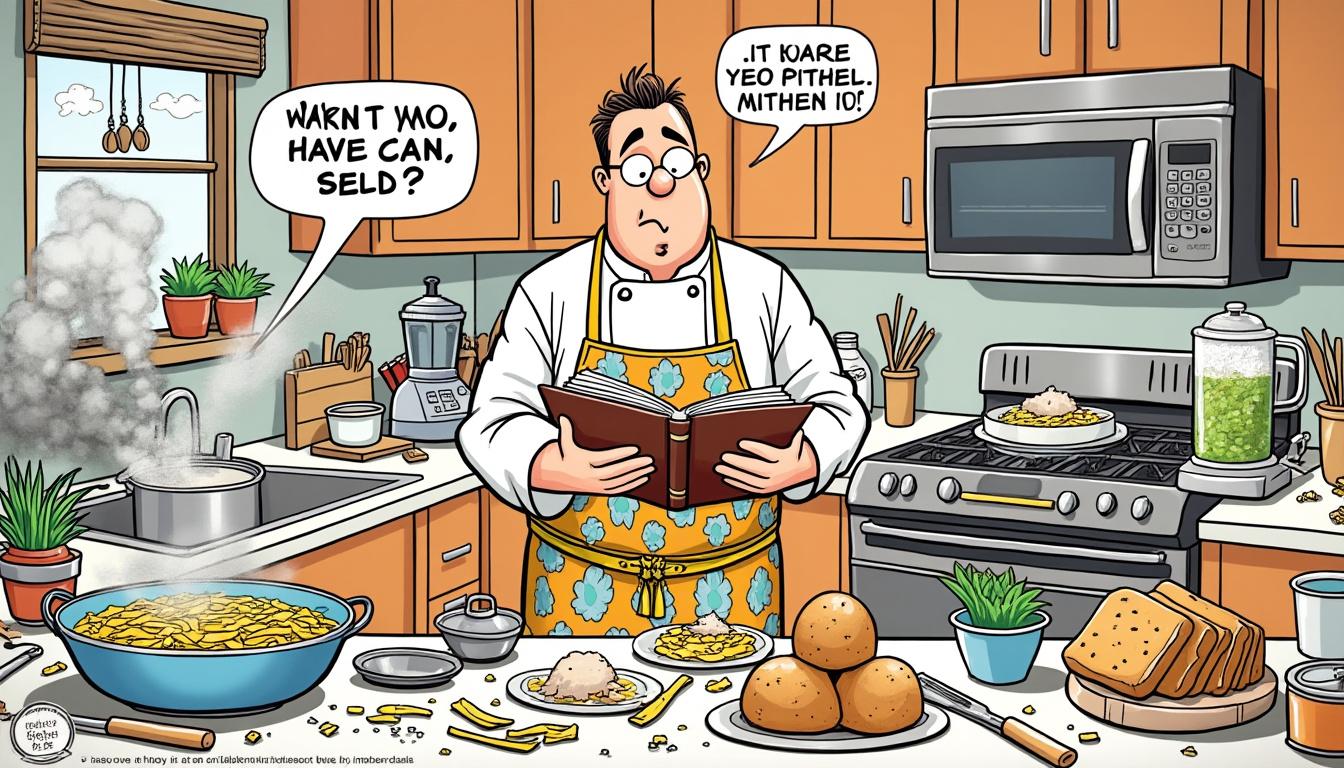Cooking is an evolving art, constantly refined by new techniques, tools, and insights. However, many home cooks cling to outdated tips learned from well-meaning sources like Betty Crocker or even family traditions that no longer serve the palate or health needs. These old-school pieces of advice can often compromise the quality of meals, affecting flavors, textures, and nutritional value. Recognizing which cooking practices to retire is essential for anyone dedicated to elevating their culinary prowess. This article dives deep into the most common outdated cooking tips that might actually sabotage your dishes, shedding light on modern alternatives empowering chefs to create exceptional meals every time.
Common Outdated Cooking Tips That Damage Flavor And Texture
Many traditional cooking tips emphasize techniques that were practical decades ago but, in today’s kitchen landscape, can detract from the desired outcome. For example, the insistence on washing raw meat thoroughly under running water is a pervasive myth. While the intention is to clean, it actually risks cross-contamination and does not improve flavor or safety, as meats should be cooked to safe temperatures rather than rinsed with water. Reputable brands such as Cuisinart and KitchenAid now emphasize hygienic cutting boards and proper meat handling instead of water washing.
Another commonly outdated practice is over-stirring dishes like risotto or sauces. Many cooks were taught by icons like Martha Stewart to continuously stir grains or sauces to prevent sticking. However, contemporary chefs illustrate that over-stirring can break down the delicate starch structure or emulsions, yielding a mushy or flat final product. Controlled, periodic stirring allows for better texture development and flavor concentration.
Outdated Tip: Dull Knives Are Safer Than Sharp Ones
Long gone is the idea that dull knives are safer, a misconception that has lingered in kitchens influenced by Pampered Chef or Wilton tutorials decades ago. Sharp knives actually provide greater control and reduce the risk of accidents because they require less force and cut cleaner, minimizing slips. Investing in quality knives and professional sharpening can dramatically improve results and kitchen safety alike.
- Avoid rinsing meats before cooking; opt for proper temperature cooking
- Refrain from excessive stirring to preserve texture and flavor integrity
- Maintain sharp knives for better control and safer food preparation
- Stop flooding cookware with oil; use proper non-stick techniques
- Discard the myth of salting pasta water to “make it boil faster”
| Outdated Tip | Why It Harms Your Dish | Modern Alternative |
|---|---|---|
| Rinsing meat before cooking | Increases cross-contamination risk and does not enhance flavor or safety | Cook at safe internal temperatures; use distinct cutting boards |
| Over-stirring sauces and starches | Breaks down texture, resulting in mushy dishes | Stir periodically but allow natural thickening |
| Using dull knives for safety | Requires more force and increases accidental cuts | Keep knives razor-sharp with regular sharpening |
Why Salt Timing And Usage Have Changed In Contemporary Cooking
Salt remains a cornerstone ingredient in any cook’s arsenal, but outdated instructions surrounding its use can cause missed flavor opportunities or poor dish outcomes. For years, cooks from popular brands like Pyrex and Le Creuset were told to salt pasta water heavily to speed up boiling times. This proved to be inefficient and can lead to overly salty water without appreciable benefits to cooking time.
More critically, salting proteins too early or too late during cooking can affect moisture retention and texture. The old rule to salt steak only after cooking is now largely debunked by food scientists and chefs, who know that proper salting ahead of time allows seasoning to penetrate the meat and improve juiciness through moisture redistribution. This principle is fundamental in meal prep routines, where seasoning strategy directly influences the final flavor profile profoundly.
Strategic Salt Usage Techniques Every Cook Should Know
- Season pasta water moderately; over-salting doesn’t speed boiling
- Salt proteins ahead of cooking to enhance moisture and flavor
- Use salt layering during multi-step recipes for balanced taste
- Employ finishing salts from trusted brands to intensify flavors
- Combine salt with acid or fat for better flavor perception
| Salt Usage Mistake | Impact On Cooking | Recommended Technique |
|---|---|---|
| Over-salting pasta water to boil faster | No impact on boiling time, can cause excessive saltiness | Use moderate salt concentration to enhance flavor only |
| Salting meat only after cooking | Reduced tenderness and less seasoned interior | Salt 40-60 minutes before cooking for optimal infusion |
| Using common table salt exclusively | Loss of nuanced flavor profiles | Incorporate specialty finishing salts like sea salt or fleur de sel |
Outdated Cooking Tools And Their Modern Replacements For Best Results
The progression of kitchen gadgets by manufacturers such as Hamilton Beach and KitchenAid has effectively made some long-standing tools obsolete or less ideal. For example, many cooks still rely heavily on old-fashioned stovetop percolators instead of electric coffee makers with precision temperature controls, resulting in inconsistency and bitterness. Much like outdated advice from Betty Crocker, continuing to use bulky, unmanaged heat sources can spoil the subtlety of flavors.
Similarly, outdated advice advocated stirring everything by hand exclusively, yet the advent of countertop food processors, blenders, and even smart appliances from brands like Cuisinart offer precise control, faster prep times, and consistent results. Relying solely on manual methods may slow workflow and compromise dish uniformity.
Comparison Of Traditional vs. Modern Cooking Tools
- Replace old stovetop percolators with electric precision coffee machines
- Upgrade from hand mixing to electric stand mixers (e.g., KitchenAid)
- Use silicone spatulas and non-stick pans instead of metal utensils on Le Creuset cookware
- Swap glass storage containers for modern Tupperware that seals freshness
- Adopt digital thermometers over analog for more accurate meat doneness
| Old Tool | Drawbacks | Modern Alternative |
|---|---|---|
| Stovetop percolator | Inconsistent temperature, bitterness | Electric coffee maker with temperature control |
| Manual whisking | Time-consuming, uneven mixing | Electric stand mixer with multiple speed settings |
| Metal utensils on enamel pans | Scratches and damages cookware | Silicone utensils |
| Glass food storage | Heavy, fragile | Advanced Tupperware with airtight seals |
Flawed Baking Advice That Leads To Disappointing Results
Baking, a precise science closely followed by brands like Wilton and Betty Crocker, has accumulated too many entrenched myths. For example, the old advice of opening the oven door frequently to check progress causes unstable temperatures, hindering proper rising and browning. Modern ovens with lighted interiors and smart temperature regulation negate this need entirely.
Many home bakers continue to rely on generic all-purpose flour indiscriminately, unaware that crafting specific textures often depends on using flours with appropriate protein levels. Overusing baking powder or soda “to make things fluffier” often backfires by imparting bitter taste or uneven crumb texture. Meal prepping enthusiasts who bake ahead benefit immensely from understanding ingredient ratios rather than blindly trusting dated shortcuts.
Key Baking Mistakes To Avoid For Perfect Cakes And Pastries
- Refrain from opening oven doors once baking begins
- Choose specific flour types as per recipe requirements
- Measure leavening agents precisely to avoid bitterness
- Utilize quality bakeware such as Pyrex or Le Creuset for even cooking
- Preheat oven fully before inserting baked goods
| Baking Myth | Why It’s Harmful | Modern Approach |
|---|---|---|
| Constant oven door opening to check doneness | Temperature fluctuations cause uneven cooking | Use oven light and timer; trust set baking times |
| Using one flour for all baking | Improper texture and structure development | Select flour by protein content (e.g., cake flour vs bread flour) |
| Excessive baking powder/soda | Bitter taste and collapsing texture | Follow exact recipe amounts; avoid increases |
Why Resting Meat And Letting Dough Rise Are Often Misunderstood
Resting cooked meats and proofing dough are cornerstones of professional cooking, but their true effect is often misapplied due to outdated guidance. The standard tip to rest all meats for 10 minutes regardless of size or cut can sometimes lead to over-resting, where the meat cools prematurely, diminishing juiciness and heat. Instead, resting time should be proportionate to the meat’s thickness and cooking method.
Likewise, letting dough rise too long or in inappropriate conditions can cause yeast overactivity or drying. Modern baking practices influenced by leading brands and kitchenware experts place great emphasis on controlled temperature environments and timely proofing, ensuring ideal gluten development without compromising texture. These details critically affect dough elasticity and final crumb.
Effective Strategies For Resting Meat And Proofing Dough
- Adjust resting time based on meat cut and thickness
- Use digital thermometers to gauge post-cook internal temperature
- Proof dough in humidity-controlled areas to prevent drying
- Avoid over-proofing to preserve dough strength and flavor
- Employ Le Creuset or Pyrex cookware for consistent heat retention during resting
| Practice | Old Misconception | Current Best Practice |
|---|---|---|
| Resting meat | All meats require a fixed 10-minute rest | Rest time depends on size and thickness; monitor internal temp |
| Proofing dough | Long, uncontrolled rises improve flavor | Proof under temperature-controlled, humid conditions |
| Using any cookware during resting | Any hot pan will hold heat evenly | Use thermal-retentive cookware like Le Creuset or Pyrex |
Frequently Asked Questions About Outdated Cooking Tips
- Is it really necessary to stop rinsing meat before cooking?
Yes. Cooking meats to safe internal temperatures eliminates bacteria more effectively than rinsing, which mainly risks contaminating surfaces. Proper hygiene and separate cutting boards are recommended instead. - Why shouldn’t I open the oven door while baking?
Opening the oven door causes temperature drops that can prevent proper rising and browning, leading to uneven baked goods. Modern ovens usually have interior lights and timers to check progress without opening. - How do I know when to salt my meat?
Salt meat 40-60 minutes before cooking to allow moisture redistribution, which enhances flavor and tenderness. - Can I continue using dull knives safely?
No. Dull knives require more force, which increases risk of slips and injury. Keeping knives sharp improves both safety and precision. - What’s the best way to proof dough?
Proof dough in a warm, humid environment to prevent drying out or overproofing. Consistent temperature control ensures optimal gluten development and rising.

